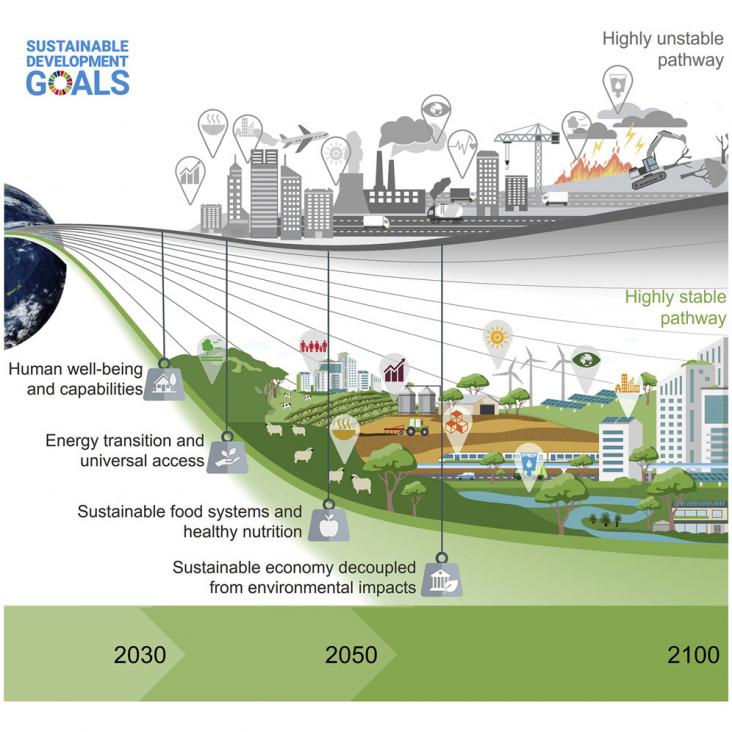This study was designed to explore the relationship between Alzheimer's disease (AD) rates and socioeconomic conditions in 120 countries.
This article advances SDG # 13, 1 and 11 by identifying ways to meet the dual objectives of poverty eradication and staying within the biophysical safe operating space of the climate via integrated policy packages supporting strong economic development, ambitious educational attendance, sustainable dietary choices, low fossil fuel consumption and energy demand, and lower fertilizer consumption.
We observe the link between Artificial Intelligence (AI) and Sustainable Development Goals (SDGs). We use automated methodologies to find insights and overlaps between AI and the SDGs. AI-Ethics frameworks need to give more attention to Society and Environment areas. Inclusive action is needed to balance the efforts for solving SDGs by using AI.SDGs 13, 14, and 15 (all related to the Environment area) are not sufficiently addressed.
This supports SDGs 3 and 5 by supporting access to care and contraception.
This study underwrites the pivotal role of voluntary work in reducing the impact of symptoms of stress on the development of depressive symptoms and the likelihood of being prescribed an antidepressant.
People with any disabilities accounted for a quarter of total deaths. People with disabilities had higher average ages and poor economic conditions. All disability types presented higher mortality rates and lower life expectancy. The major causes of death differed according to the type of disability.

Indicate the importance of adopting longer-term timeframes and pathways to ensure that the necessary pre-conditions are in place for sustainability (including climate action) beyond the current 2030 Agenda.
The findings from this study suggest that racial identity and perceived income adequacy jointly shape dietary quality. While preliminary, the findings from this study locate inequities in dietary intakes among segments of the population identifying as Black and indigenous, in conjunction with segments reporting perceived adequacy of income. Public health strategies aimed at ameliorating dietary inequities must address the structural and systemic barriers that marginalize some members of racialized and socioeconomically disadvantaged groups, while not overlooking racial disparities that persist even among individuals who are not necessarily socioeconomically disadvantaged.
An Editorial on the cost of living crisis, in the context of SDGs 1, 2, and 3, calling for governments to act urgently to address poverty and food insecurity to avoid further compromising the health of populations, especially children.
An Article on the increase in hunger brought about by the COVID-19 pandemic, in the context of SDG 3, focusing specifically on the Supplemental NutrAticition Assistance Program on mitigating this indirect effect of the pandemic on a national level across the USA.
